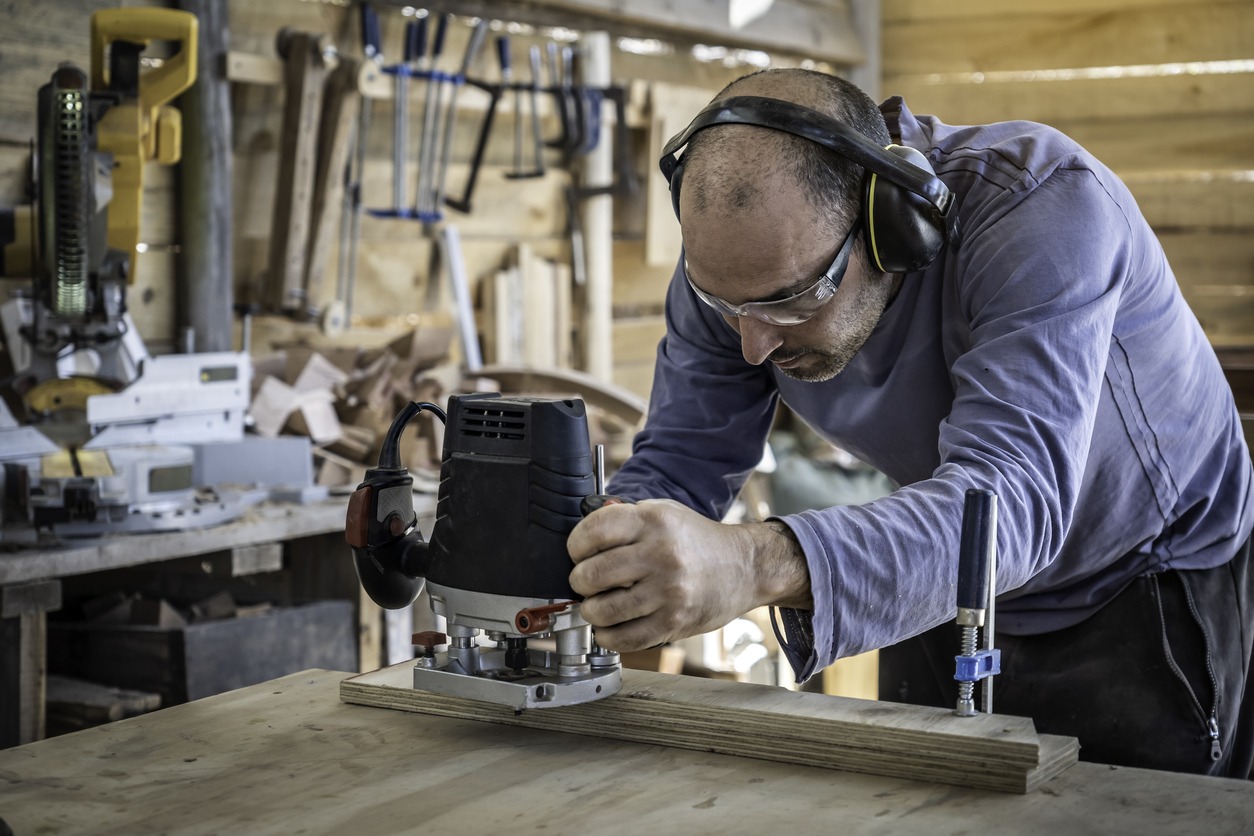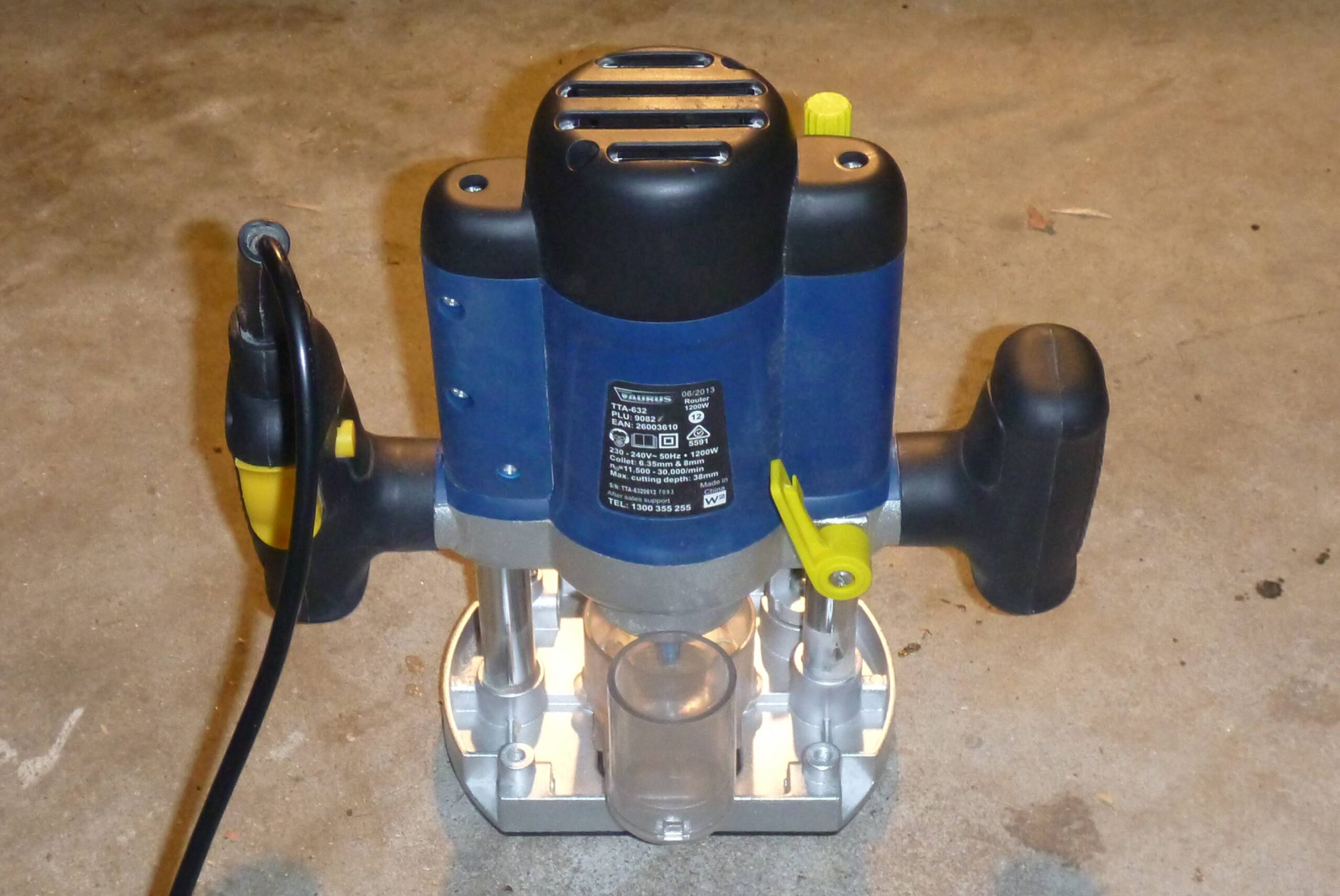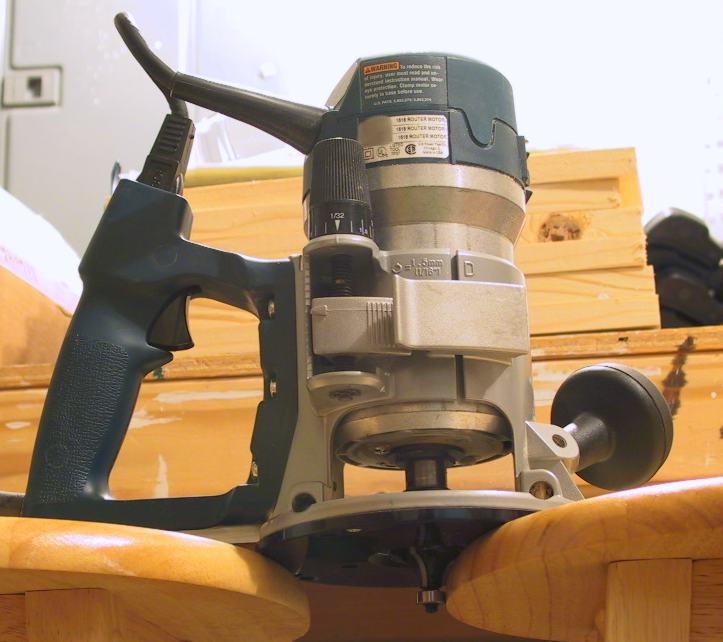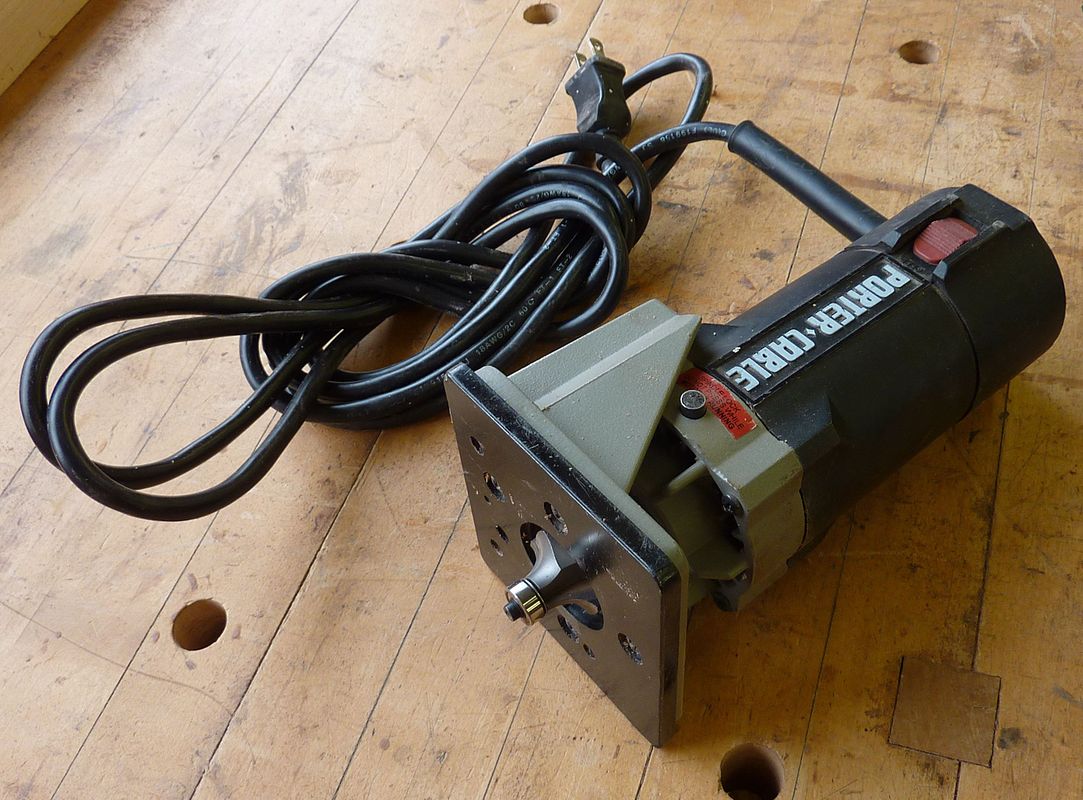A router is an effective tool that can be used to “rout out” or create hollows to formulate patterns on hard materials like wood and plastic. A router is about grooves and fancy edges; sometimes, more than that. It can also create flawless rabbets, dadoes, and other inlay wood patterns. A router proves itself to be a versatile tool as it can also be used for plunging and can be inverted in a router table as well.
What Can You Do With A Router?
A router is one of the most adaptable tools in the toolbox of the majority of woodworkers. Here are a few common applications in case you’re unsure of what you can do with the tool:
1. Fancy Edges
Making smooth and fancy edges on wood is not everyone’s cup of tea, but a router can greatly help you in creating perfect edges. Regardless of the type of wood you are dealing with, a router will ensure a smooth finish.
2. Recreating The Patterns
You can use routers to recreate the pattern, grooves, and design on a wood piece. Consider a broken chair and a different piece of wood as examples. The router can be used to repeatedly create the original piece by tracing its contours. Intricate lettering and designs can also be traced on flat pieces of wood using routers.
3. Cutting Dadoes
There are two main types of dadoes, blind dado and through dado. To cut either of these, you need a router with a straight bit. A router can handle all the dadoing and grooving you want to do in woodworking.
4. Decorative Molding
Decorative molding is among the coolest things you can do with a router. With the help of bits, any type of molding can be created. With a router, you can create any design, no matter how simple or archaic.
Types Of Router
A woodwork shop typically has a variety of routers. However, you might have to start with just one router because of financial limitations or limited use. There are three main types of routers, and you should pick the one that best fits your needs and your budget:
1. Plunge
This is the type of router used by most woodworkers. A plunge router allows the user to make cutting adjustments without having to turn the motor off. It has an electric motor mounted between two posts. The motor rests atop springs, while a flat base supports and guides the motor at an angle of 90 degrees. Plunge routers are great for making dadoes, mortises, and other patterns because you can move them into position and lower the bit accurately.
Since plunge routers are a bit unwieldy and difficult to work with, some people do not like to use them and instead prefer fixed routers. However, it can be addressed by placing the router in a router table. There are store-bought router tables that are relatively cheap, or you can make a router table youself.
2. Fixed-Base
Fixed-base routers, also known as stationary routers, are perfect for woodworking tasks that don’t require cut-depth adjustment. Furthermore, rabbets, dadoes, and creating decorative edges are all excellent uses for fixed-base routers. As a result of allowing your hands to be much closer to the workpiece, these types of routers give you better control and stability when moving the machine over it. These characteristics make fixed-base routers a perfect fit for creating freehand edgework and jig work.
3. Laminate Trimmer (Trimming Router)
A laminate trimmer might be a good choice if you are on a tight budget and need a tool to work on edges. It essentially trims laminate and typically has a 1/4-inch collet. It is a smaller, lighter, and more portable router version. The edges of a workpiece, such as a tabletop or a shelf, can be made neatly and even for decorative purposes.
Plunge Router | Fixed Based Router | Laminate Trimmer Router |
Plunge routers have fewer options. | Detents are built-in catches for large adjustments on fixed-base routers. | It is primarily used for edging. |
A great tool for working with different cut depths on a single piece of wood. | Works excellently when mounted beneath a router table. | They are lighter weight, less powerful, but usually plenty for up to about ½ inch thick stuff. |
It can be applied to make artistic edge cuts. | Fine for most edge works. | It is cheaper and more portable. |
ability to cut through a piece of wood, as is necessary for a cabinet door with a raised panel. | The cut will be consistent regardless of use once the cutting bit’s depth has been set. | It should be applied to tasks where the starting point and finishing point are equal (trimming, side-polishing, etc.) |
Things to Consider When Buying a Router
Everybody has different preferences, and every router can assist you with a variety of tasks, but here are the most important factors to consider when buying a router:
-
Handle
Routers come in D-handles and knobs. Many people have their preferences, but D-handles are easier to grip since it also features a switch that can be triggered by your index finger.
-
Collet
A collet is a steel-base that holds the bit in a router. It works with the router shaft and the collet nut. Self-ejecting collets make changing bits a bit easier and simpler since it also comes with a spindle lock
-
Power
Power may range from 1 to 3.5 hp. The more horsepower a router has, the more efficient it will be in making deeper cuts on the hardwood. But there’s a trade-off: the more power means a heavier tool. That’s why it is up to you to decide which of these factors is important: power or portability and easier handling.
A Few Things To Keep In Mind
Buyers can shape the wood in a variety of ways by cutting it with router bits. However, unless the bits are installed properly, it’s unlikely that they will function as intended. The installation could make the bit vibrate erratically and even make annoying noises. Therefore, it’s important to configure the bit correctly and use the router safely.
You ought to be able to create a variety of profiles on the edge of the wood by applying partial profiles and using the bits at the same time. Even though some power tools are robust, functional, and long-lasting, nothing lasts forever. This means that purchasers should take all reasonable steps to prolong the life of the router.
FAQs
- Which wood router is best for woodworking?
You need to decide what you want to do with a router first. It’s better to go with an HP rating of around 1 for lighter jobs.
- Do the bits differ between a trim router and a fixed-base router?
Trim routers use different bits than fixed base routers do. As opposed to a fixed base router, a trim router’s bits are smaller and have a different shape because it is intended to cut smaller pieces of wood.
- What size cutter shanks are the best?
Cutter shanks typically come in two sizes: 14″ and 12″. Cutters with a 14″ shank will fit smaller routers. Collets are available on larger routers so that both sizes can be used. If you have a choice, choose a 12″ shank because it offers a more rigid cut with less chatter.
Conclusion
A router is a versatile power tool that is used to create patterns and shapes on hard materials such as wood and plastic. It is the handy tool for a newbie to get started with woodworking. It can also be used for tasks such as creating smooth edges, recreating patterns and designs, cutting dadoes, and creating decorative molding. There are three main types of routers to choose from: the plunge, fixed-base, and laminate trimmer. Each has specific qualities and can be used for different tasks.



